Thermoplastic Starch (TPS) Films Added with Mucilage from Opuntia Ficus Indica: Mechanical, Microstructural and Thermal Characterization
Abstract
1. Introduction
2. Materials and Methods
2.1. Mucilage Extraction and Preliminary Measurements
2.2. Films’ Preparation
- A thermoplastic starch (TPS) film was prepared using potato starch, previously extracted from yellow skin cull potatoes with around 25% dry matter, measured at 105 °C, by centrifuging them at 3000 rpm for 15 min, as per indications coming from [17]. The obtained starch contained 23 wt.% amylose and bulk amylopectin, and with an average granule dimension of 50 μm. Starch was filtered before gelatinization under a 250 μm mesh, as to remove moisture-generated lumps. To fabricate the TPS, 10 g of sieved potato starch was added with 4 mL of glycerol, reagent grade, were added, in 400 mL of distilled water. The solution was stirred manually at a temperature around 90 °C to produce gelatinization for approximately 10 min, until its appearance is uniform. It was then subsequently poured in an uncovered steel mold with the approximate surface of 200 × 150 mm covered in Teflon, to ease demolding, and then kept there for an hour at 70 °C, and finally at 45 °C overnight.
- Nopal films with 10 g of sieved potato starch and 4 mL of glycerol, reagent grade, in 400 mL of nopal mucilage, which therefore replaces distilled water, using the same procedure for production, as before. Three different nopal films were produced using the different extraction procedures, therefore defined as maceration (MA), mechanical (ME) and mechanical post-maceration (MPM) films, respectively.
2.3. Films’ Characterization
- Optical microscopy and scanning electron microscopy (SEM) of the films as received, to evaluate their morphology and after tensile tests, to study the fracture surfaces. The optical microscope used was a NIKON Eclipse 80-i C1 (Nikon, Minato, Tokyo, Japan). The SEM apparatus used was a Zeiss EVO MA15 (Carl Zeiss, Oberkochen, Germany). Using SEM, also a qualitative analysis of the elements present on the surface was carried out by EDS (energy dispersive X-ray spectrometry).
- Tensile tests were performed using the Testometric model MICRO 350 (Testometric Co. Ltd., Rochdale OL11 1NR, UK) displacement control mode at a cross-head velocity equal to 2 mm/min, using dog-bone specimens with a gauge length equal to 40 mm. Typical dimensions of the samples are shown in Figure 4.
- Differential scanning calorimetry (DSC) to evaluate the evolution of the films’ behavior with temperature by heating at a rate of 10 °C/min, from 25 to 180 °C, using the Mettler Toledo HPDSC system (Mettler Toledo, Columbus, Ohio, US). Temperatures for the different transition moments (i.e., onset, peak and ending temperature) were determined using the first derivative of the heat capacity calculated from DSC.
3. Results
4. Conclusions
Author Contributions
Funding
Conflicts of Interest
References
- Reyes-Agüero, A.J.; Aguirre-Rivera, R.J.; Hernández, H.M. Systematic notes and a detailed description of Opuntia ficus-indica (L.) Mill. (Cactaceae). Agrociencia 2005, 39, 395–408. [Google Scholar]
- Ayadi, M.A.; Abdelmaksoud, W.; Ennouri, M.; Attia, H. Cladodes from Opuntia ficus indica as a source of dietary fiber: Effect on dough characteristics and cake making. Ind. Crops Prod. 2009, 30, 40–47. [Google Scholar] [CrossRef]
- Sáenz, C.; Sepúlveda, E.; Matsuhiro, B. Opuntia spp mucilage’s: A functional component with industrial perspectives. J. Arid Environ. 2004, 57, 275–290. [Google Scholar] [CrossRef]
- Cárdenas, A.; Higuera-Ciapara, I.; Goycoolea, F.M. Rheology and aggregation of cactus (Opuntia ficus-indica) mucilage in solution. J. Prof. Assoc. Cactus Dev. 1997, 2, 152–159. [Google Scholar]
- Gheribi, R.; Khwaldi, K. Cactus Mucilage for Food Packaging Applications. Coatings 2019, 9, 655. [Google Scholar] [CrossRef]
- Morais, M.A.; Fonseca, K.S.; Viégas, E.K.D.; Almeida, S.L.; Maia, R.K.M.; Silva, V.N.S.; Simoes, A.N. Mucilage of spineless cactus in the composition of an edible coating for minimally processed yam (Dioscorea spp.). J. Food Meas. Charact. 2019, 13, 2000–2008. [Google Scholar] [CrossRef]
- Allegra, A.; Inglese, P.; Sortino, G.; Settanni, L.; Todaro, A.; Liguori, G. The influence of Opuntia ficus-indica mucilage edible coating on the quality of ‘Hayward’ kiwifruit slices. Postharvest Biol. Technol. 2016, 120, 45–51. [Google Scholar] [CrossRef]
- Lopez-Garcia, F.; Jimenez-Martinez, C.; Guzman-Lucero, D.; Maciel-Cerda, A.; Delgado-Macuil, R.; Cabrero-Palomino, D.; Terres-Rojas, E.; Arzate-Vazquez, I. Physical and chemical characterization of a biopolymer film made with corn starch and nopal xoconostle (Opuntia joconsotle) Mucilage. Rev. Mex. Ing. Quim. 2017, 16, 147–158. [Google Scholar]
- Dominguez-Martinez, B.M.; Martinez-Flores, H.E.; Berrios, J.J.; Otoni, C.G.; Wood, D.F.; Velazquez, G. Physical characterization of biodegradable films based on chitosan, polyvinyl alcohol and Opuntia Mucilage. J. Polym. Environ. 2017, 25, 683–691. [Google Scholar] [CrossRef]
- Troiano, M.; Santulli, C.; Roselli, G.; Di Girolami, G.; Cinaglia, P.; Gkrilla, A. DIY bioplastics from peanut hulls waste in a starch-milk based matrix. FME Trans. 2018, 46, 503–512. [Google Scholar] [CrossRef]
- Caliendo, C.; Langella, C.; Santulli, C.; Bove, A. Hand orthosis designed and produced in DIY biocomposites from agrowaste. Des. Health 2018, 2, 211–235. [Google Scholar] [CrossRef]
- Battistelli, D.; Santulli, C. Production and tensile characterization of thermoplastic starch films filled with iron scrap powder waste and molded on different support materials. J. Mater. Sci. Res. Rev. 2019, 3, 1–8. [Google Scholar]
- Nafchi, A.M.; Moradpour, M.; Saeidi, M.; Karim, A. Thermoplastic starches: Properties, challenges, and prospects. Starch-Stärke 2013, 65, 61–72. [Google Scholar] [CrossRef]
- Scognamiglio, F.; Santulli, C.; Roselli, G. Extraction of Cellulose Nanocrystals (NCC) from Cotton Waste and Morphology of NCC Obtained with Different Alkali Neutralization. Curr. J. Appl. Sci. Technol. 2019, 36, 1–8. [Google Scholar] [CrossRef]
- Scognamiglio, F.; Mirabile Gattia, D.; Roselli, G.; Persia, F.; De Angelis, U.; Santulli, C. Thermoplastic Starch Films Added with Dry Nopal (Opuntia Ficus Indica) Fibers. Fibers 2019, 7, 99. [Google Scholar] [CrossRef]
- Stintzing, F.C.; Carle, R. A review on their chemistry, technology, and uses. Mol. Nutr. Food Res. 2005, 49, 175–194. [Google Scholar] [CrossRef]
- Altemimi, A.B. Extraction and Optimization of Potato Starch and Its Application as a Stabilizer in Yogurt Manufacturing. Foods 2018, 29, 14. [Google Scholar] [CrossRef]
- Hernández-Urbiola, M.I.; Contreras-Padilla, M.; Pérez-Torrero, E.; Hernández-Quevedo, G.; Rojas-Molina, J.I.; Cortes, M.E.; Rodríguez García, M.E. Study of nutritional composition of nopal (Opuntia ficus-indica cv. redonda) at different maturity stages. Open Nutr. J. 2010, 4, 11–16. [Google Scholar] [CrossRef]
- Tabilo-Munizaga, G.; Saenz-Hernandez, C.; Herrera-Lavados, C. Influence of temperature, calcium and sucrose concentration on viscoelastic properties of Prosopis chilensis seed gum and nopal mucilage dispersions. Int. J. Food Sci. Technol. 2018, 53, 1781–1788. [Google Scholar] [CrossRef]
- Goycoolea, F.M.; Cardenas, A. Pectins from Opuntia spp.: A short review. J. Prof. Assoc. Cactus Dev. 2003, 5, 17–29. [Google Scholar]
- Kim, Y.J.; Lee, H.M.; Park, O.O. Processabilities and mechanical properties of Surlyn-treated starch/LDPE blends. Polym. Eng. Sci. 1995, 35, 1652–1657. [Google Scholar] [CrossRef]
- Simkovic, I. Unexplored possibilities of all-polysaccharide composites. Carbohydr. Polym. 2013, 95, 697–715. [Google Scholar] [CrossRef] [PubMed]
- Sepùlveda, C.; Sàenz, C.; Aliaga, E.; Aceituno, C. Extraction and characterization of mucilage in Opuntia spp. J. Arid Environ. 2007, 68, 534–545. [Google Scholar] [CrossRef]
- Rodriguez-Gonzalez, F.J.; Ramsay, B.A.; Favis, B.D. Rheological and thermal properties of thermoplastic starch with high glycerol content. Carbohydr. Polym. 2004, 58, 139–147. [Google Scholar] [CrossRef]
- Zakaria, N.H.; Muhammad, N.; Abdullah, M.M.A.B.; Sandu, I.G.; MeiWan, C.L. Characteristics of thermoplastic potato starch/bentonite nanocomposite film. In IOP Conference Series: Materials Science and Engineering; IOP Publishing: Bristol, UK, 2018; Volume 374, p. 012025. [Google Scholar]
- Majdzadeh-Ardakani, K.; Navarchian, A.H.; Sadeghi, F. Optimization of mechanical properties of thermoplastic starch/clay nanocomposites. Carbohydr. Polym. 2010, 79, 547–554. [Google Scholar] [CrossRef]
- Wilpiszewska, K.; Czech, Z. Citric acid modified potato starch films containing microcrystalline cellulose reinforcement–properties and application. Starch-Stärke 2013, 66, 660–667. [Google Scholar] [CrossRef]
- Contreras-Padilla, M.; Rivera-Muñoz, E.M.; Gutiérrez-Cortez, E.; Real del López, A.; Rodríguez-García, M.E. Characterization of crystalline structures in Opuntia ficus-indica. J. Biol. Phys. 2015, 41, 99–112. [Google Scholar] [CrossRef]
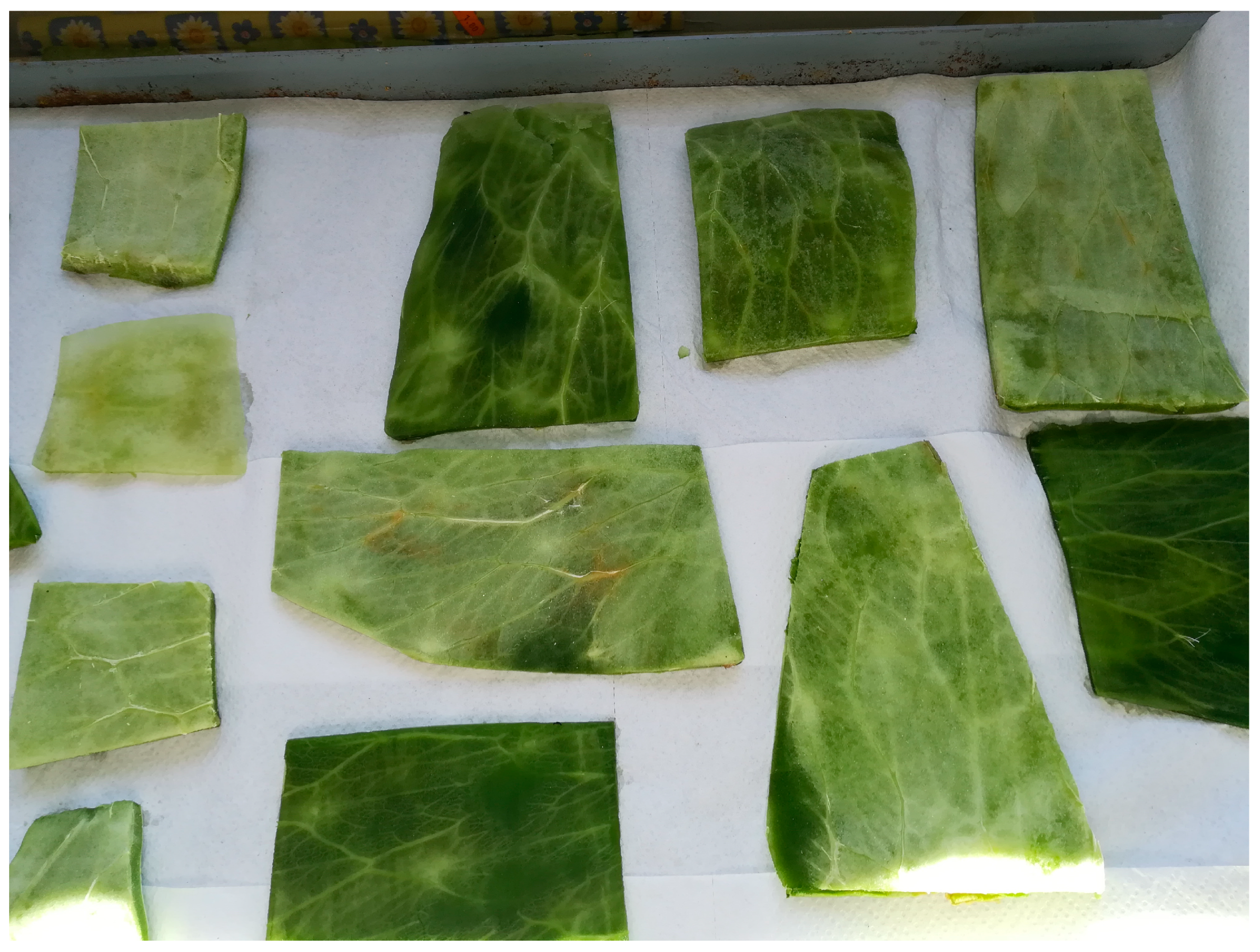
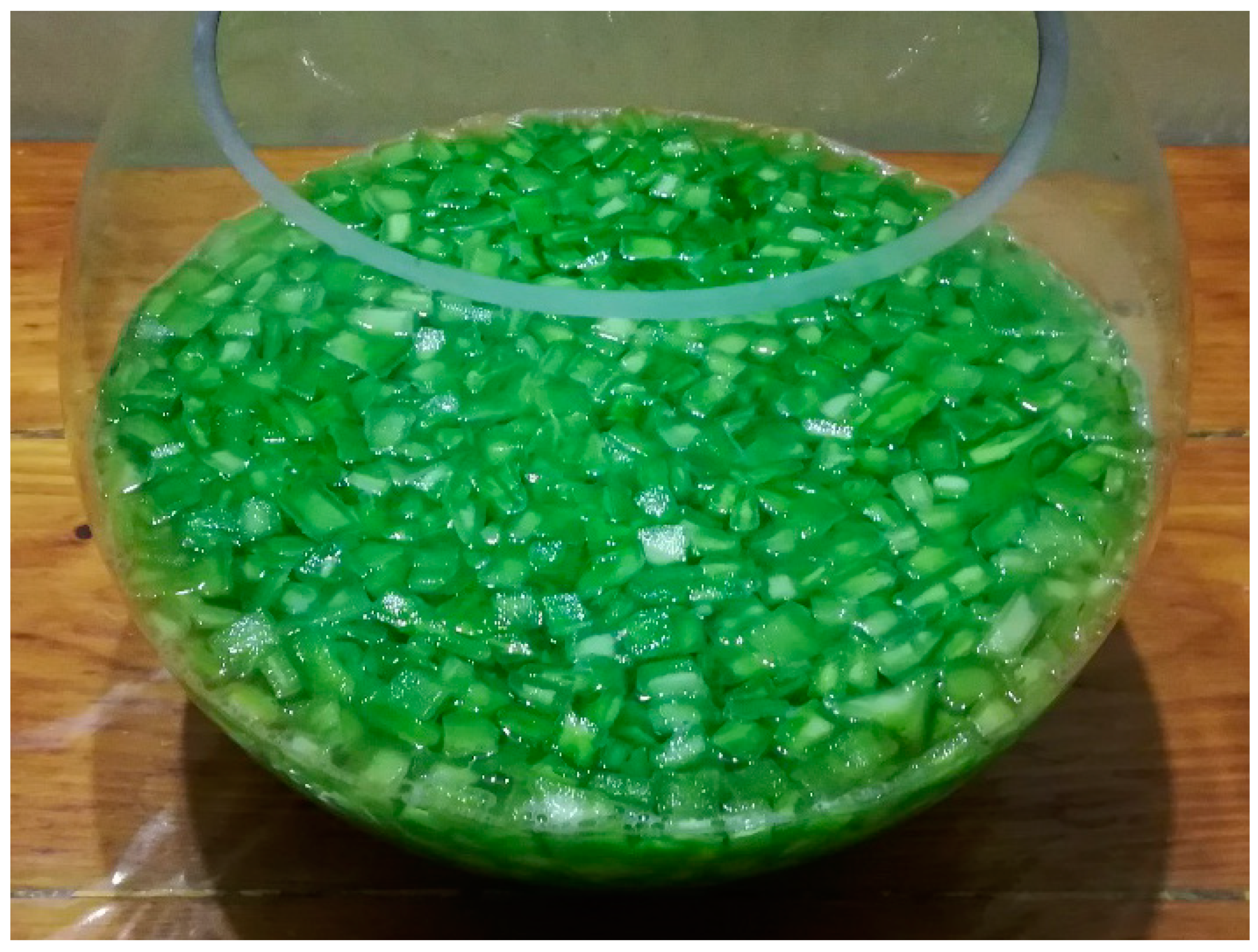
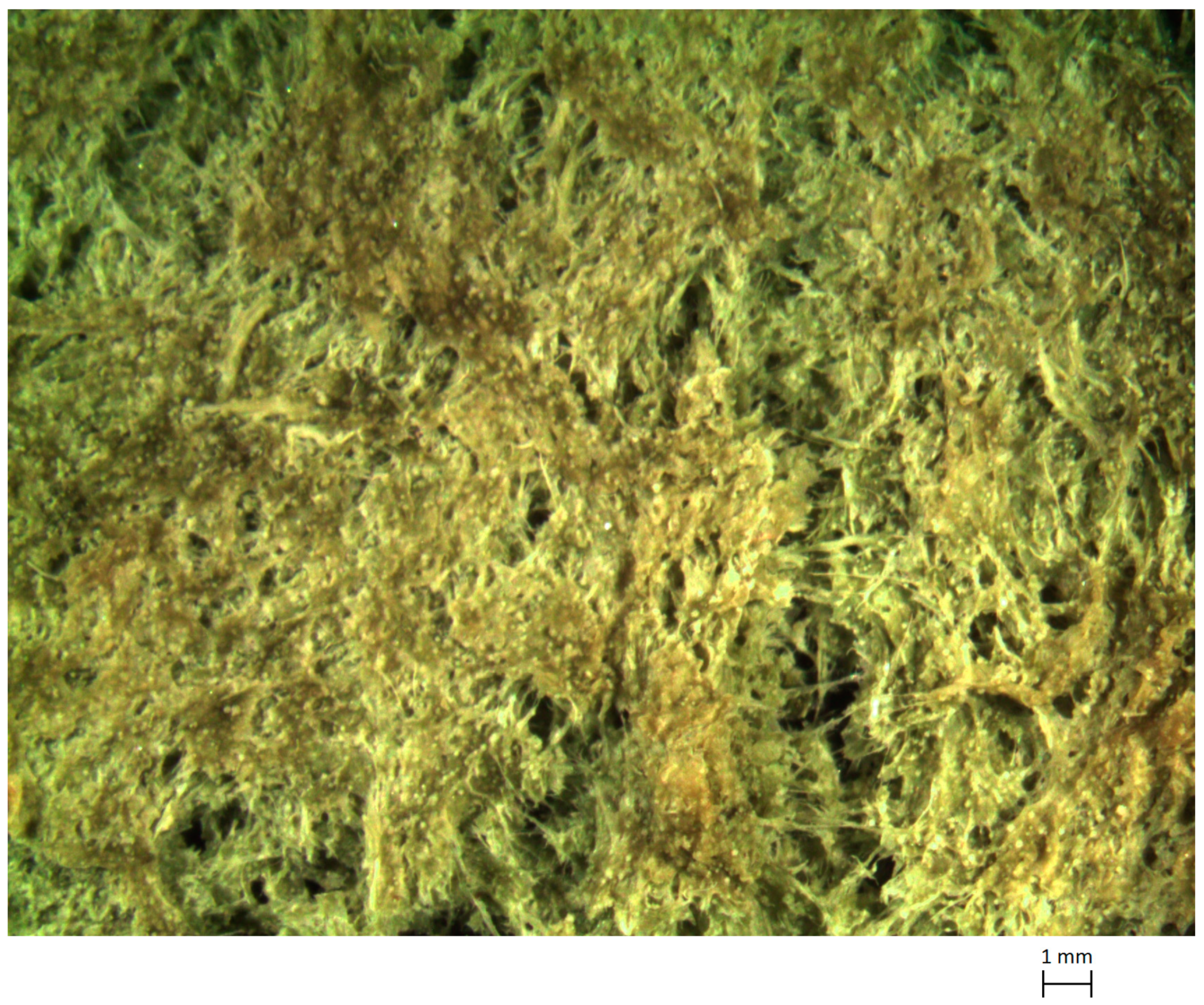

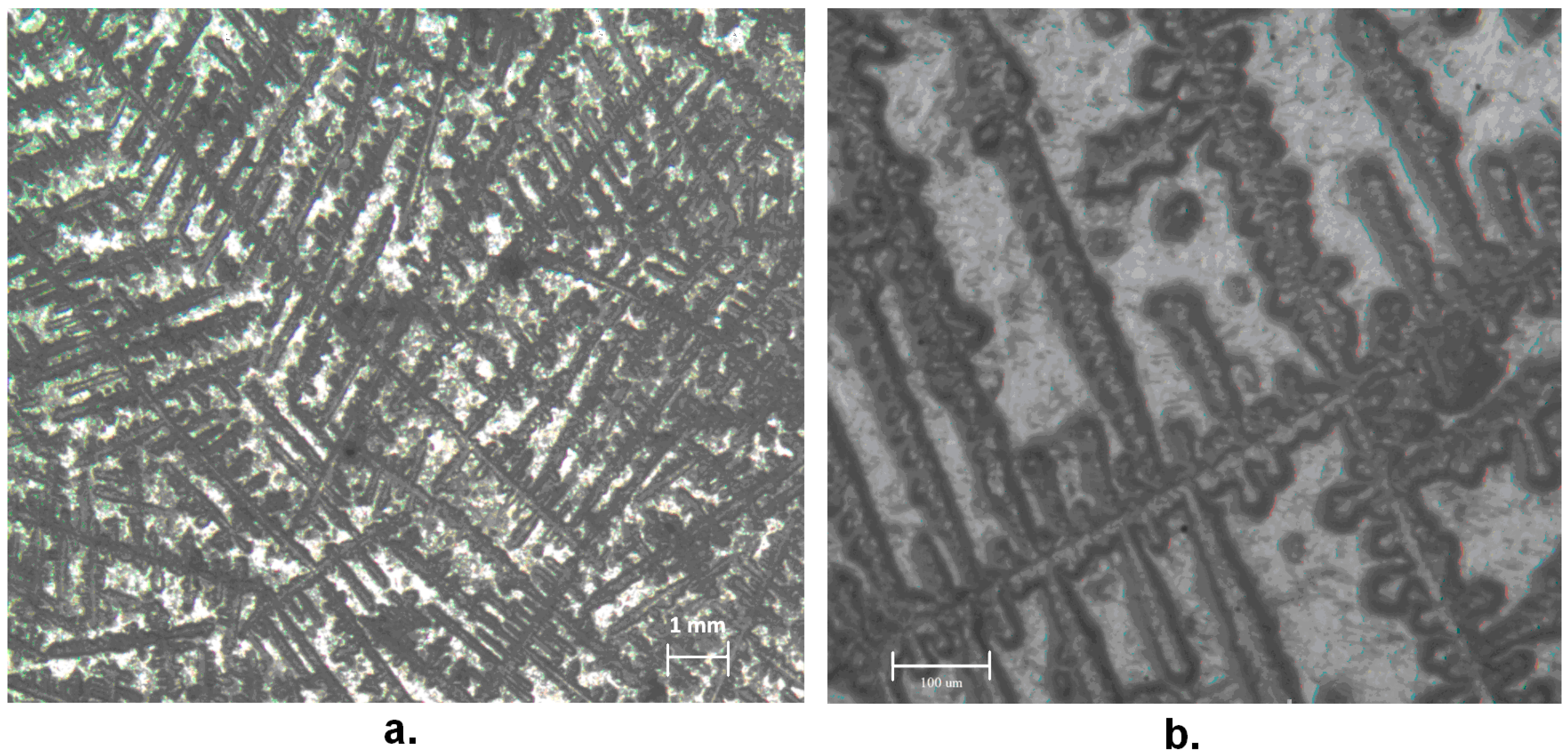
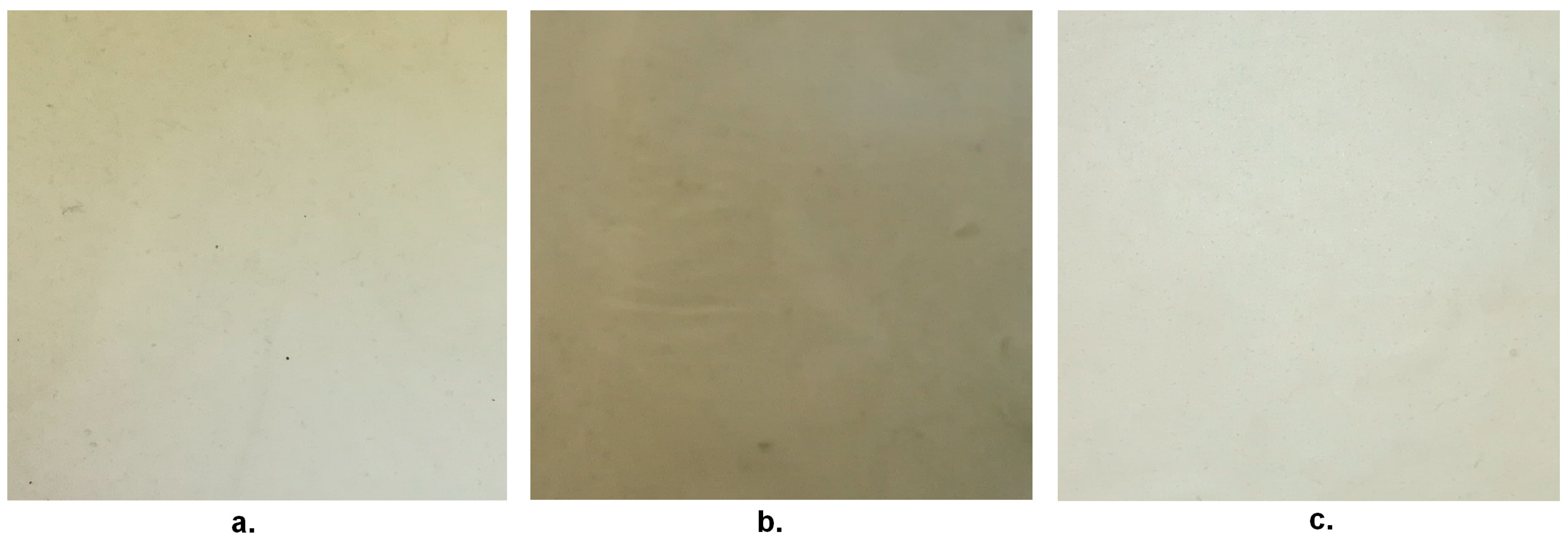
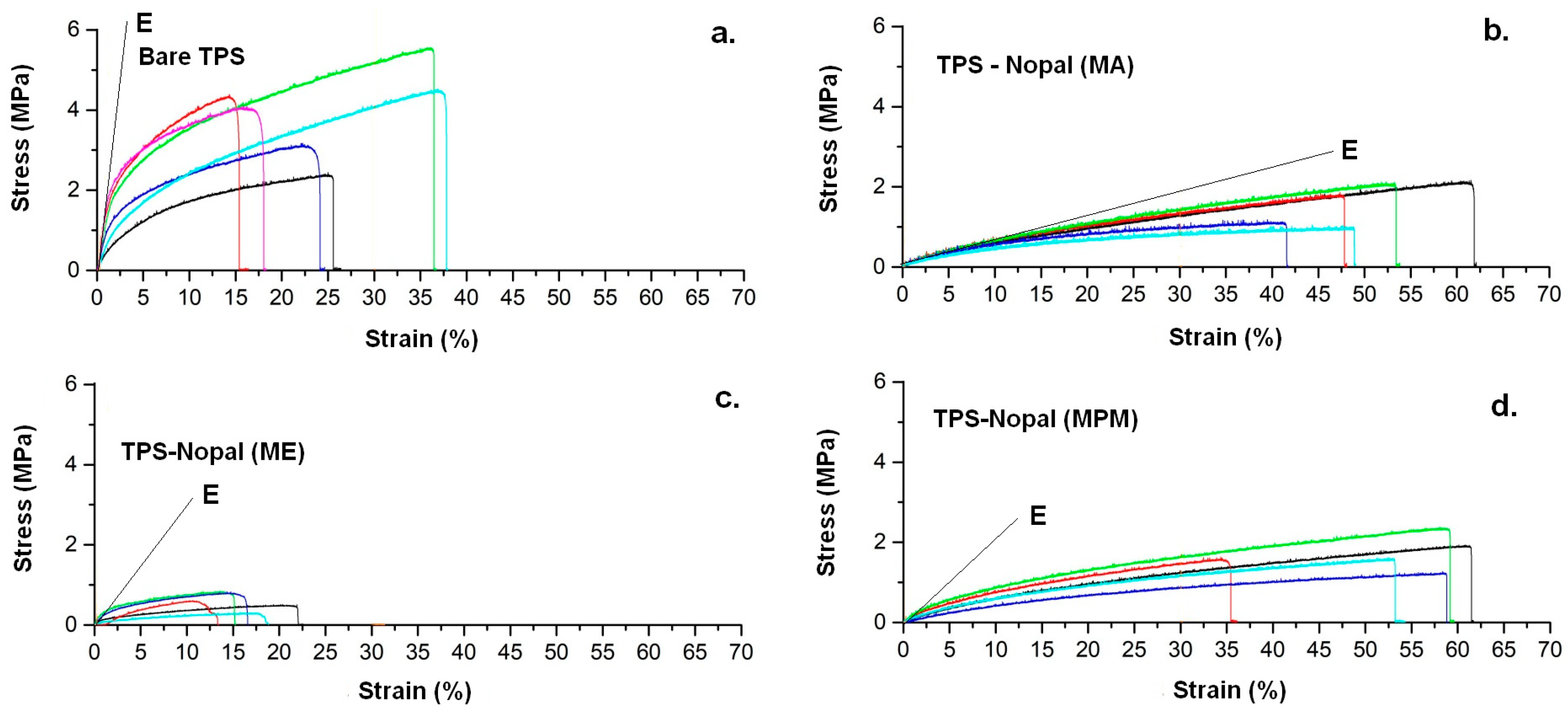
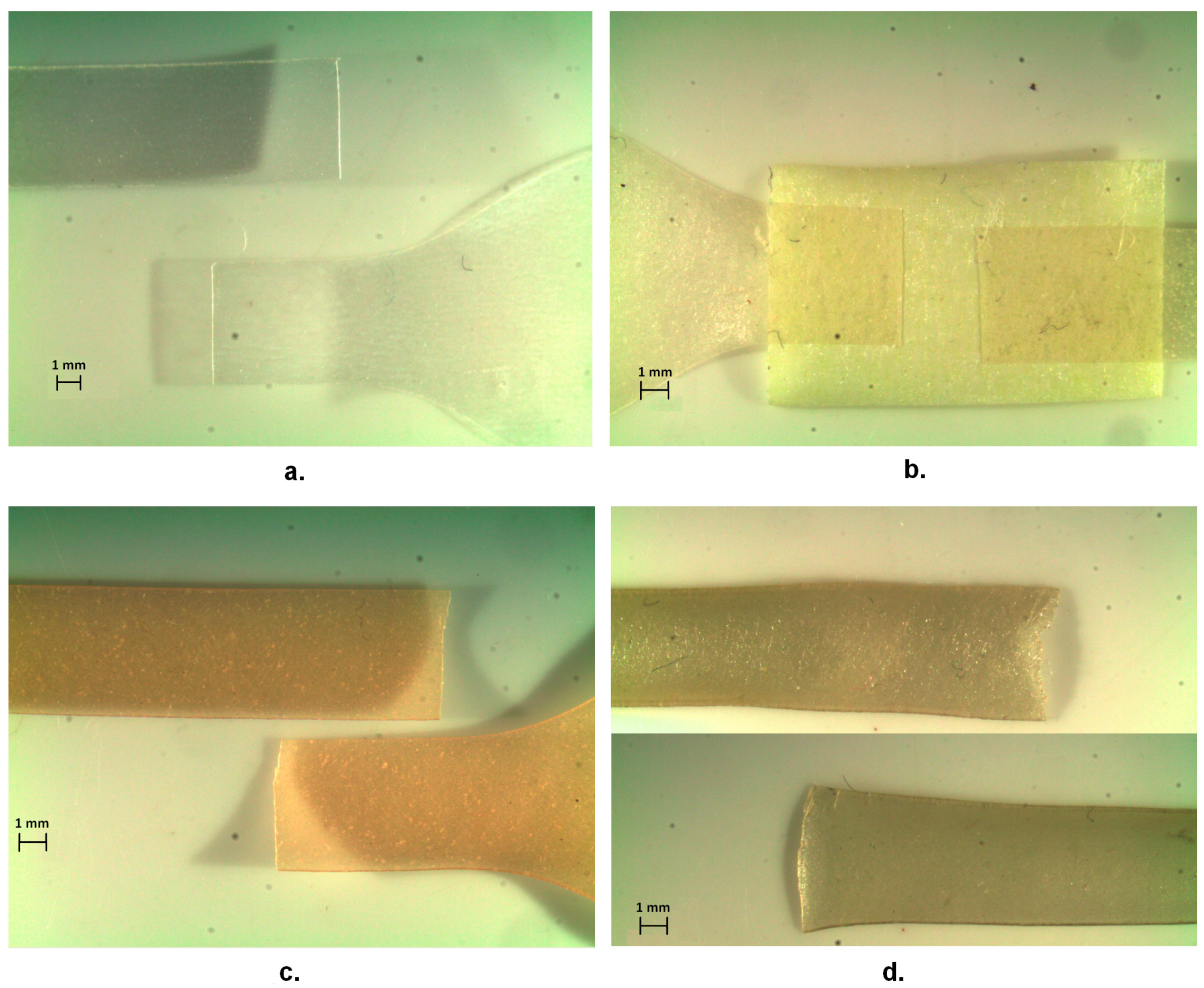
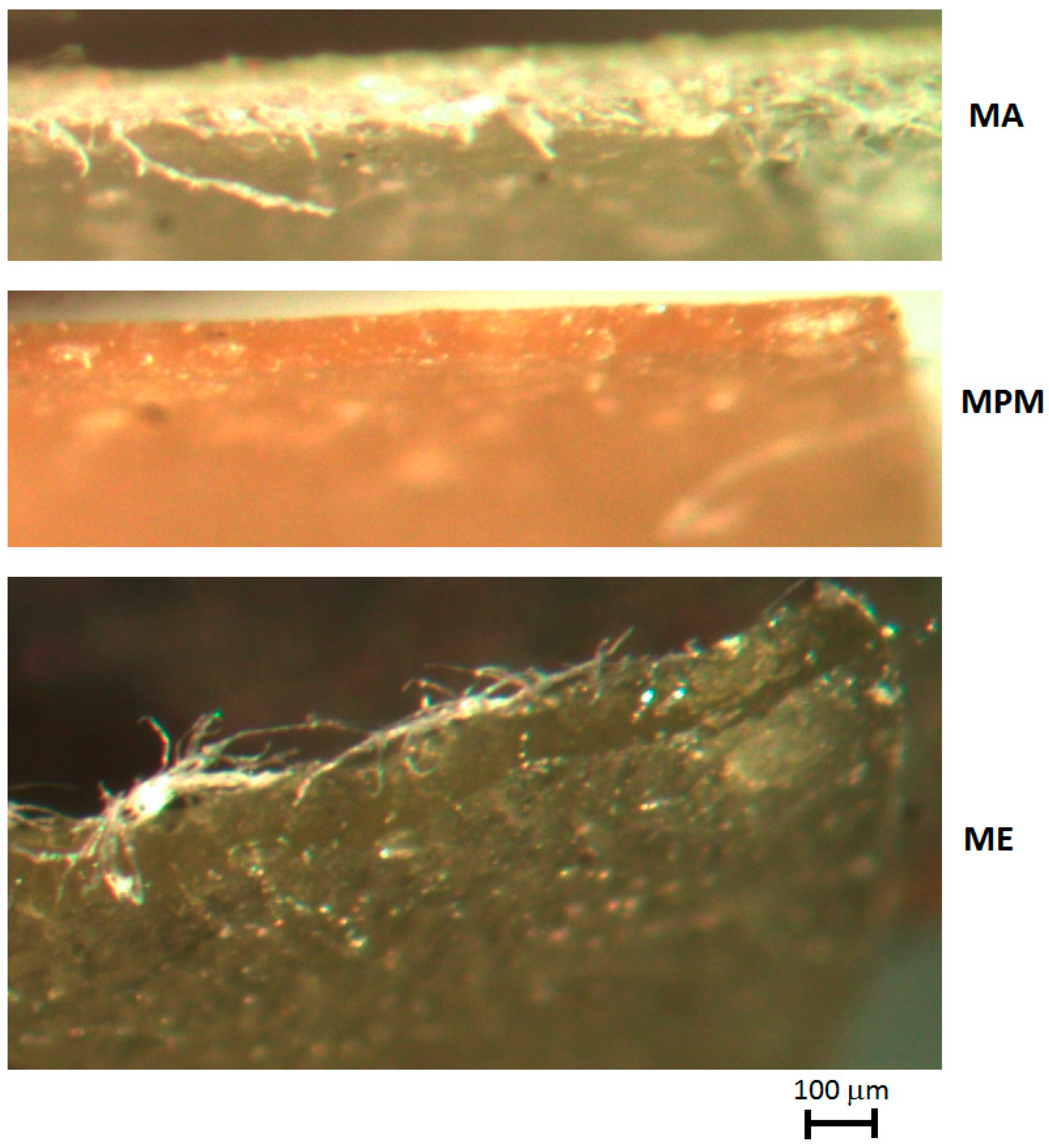
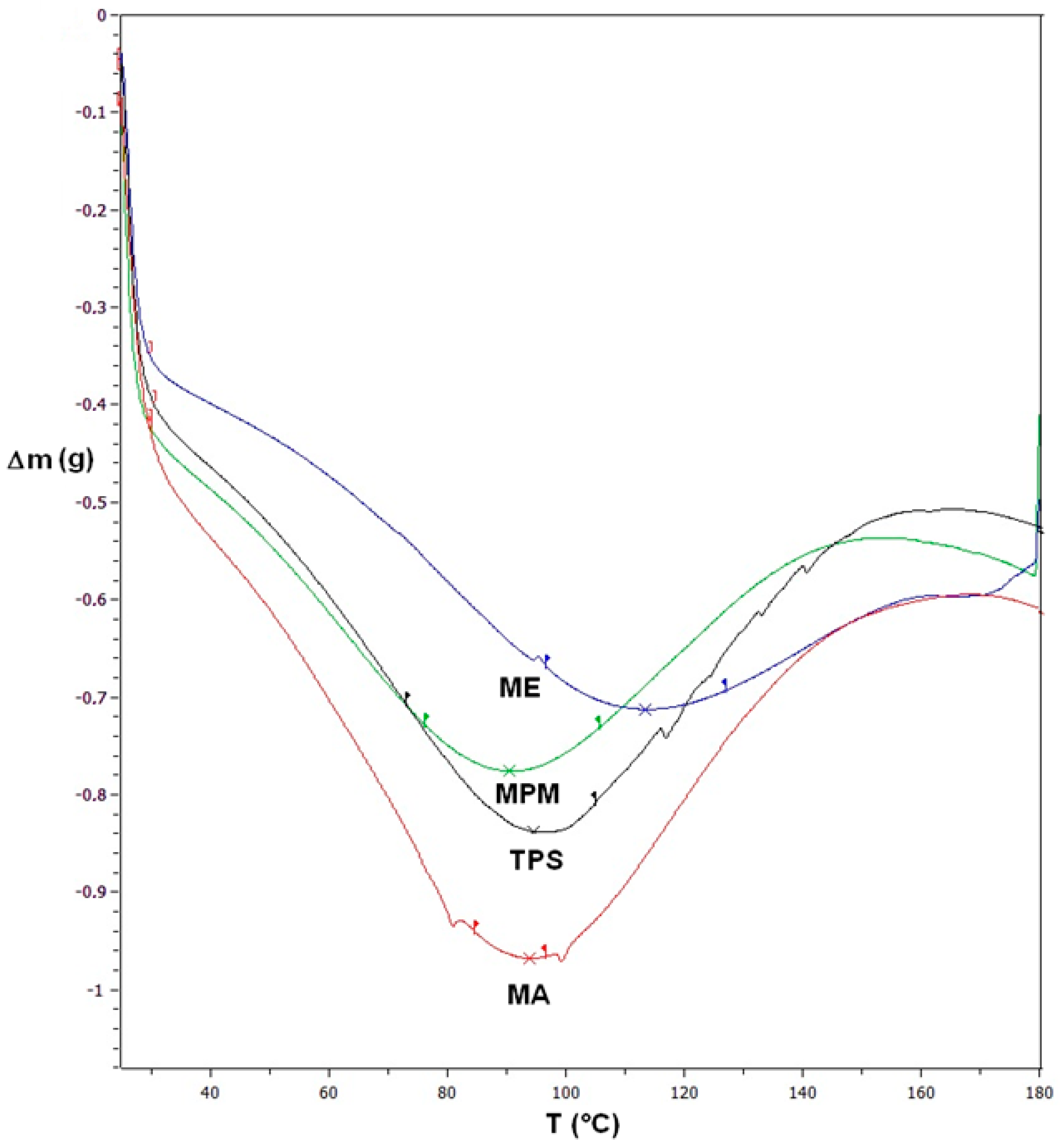
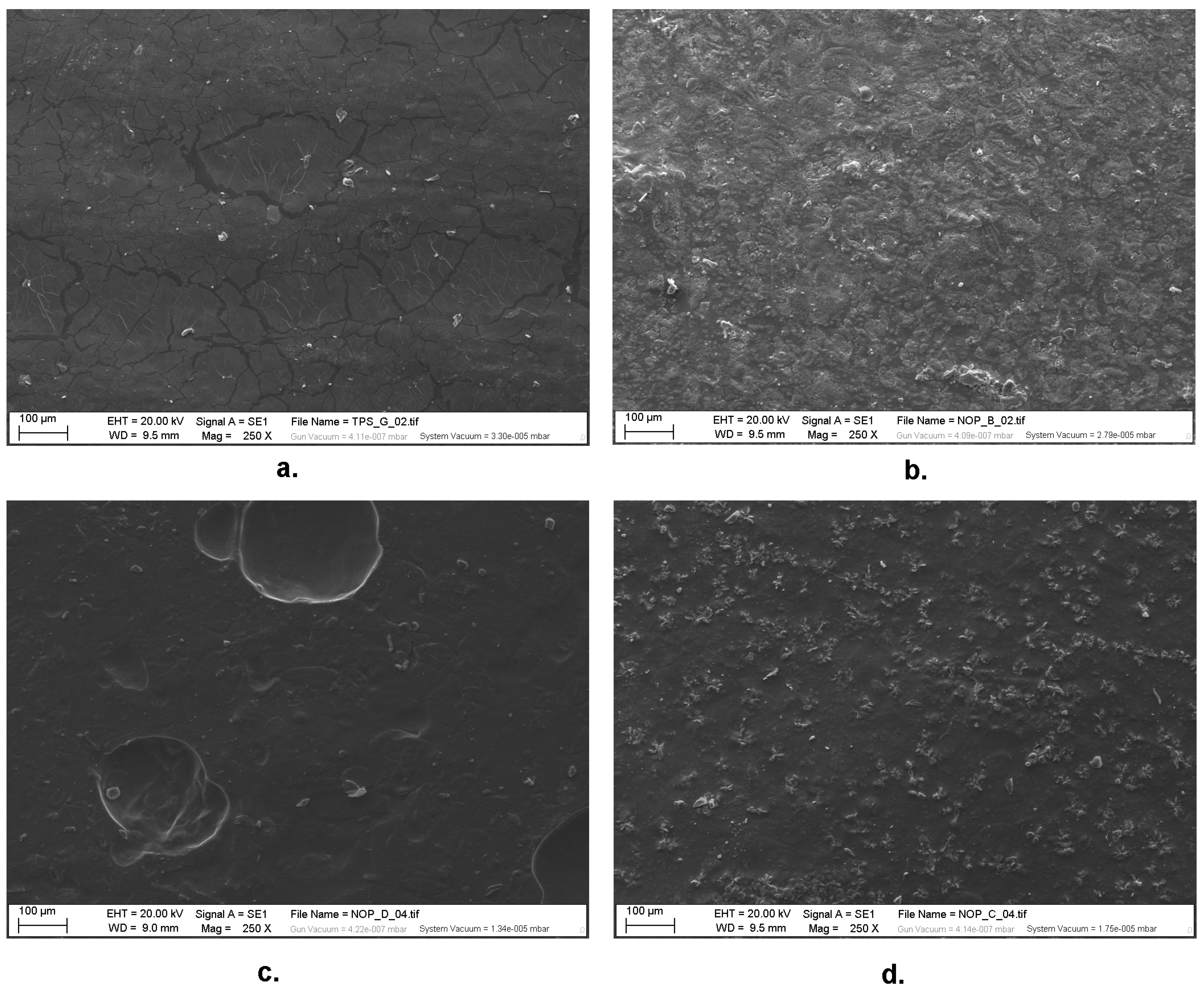
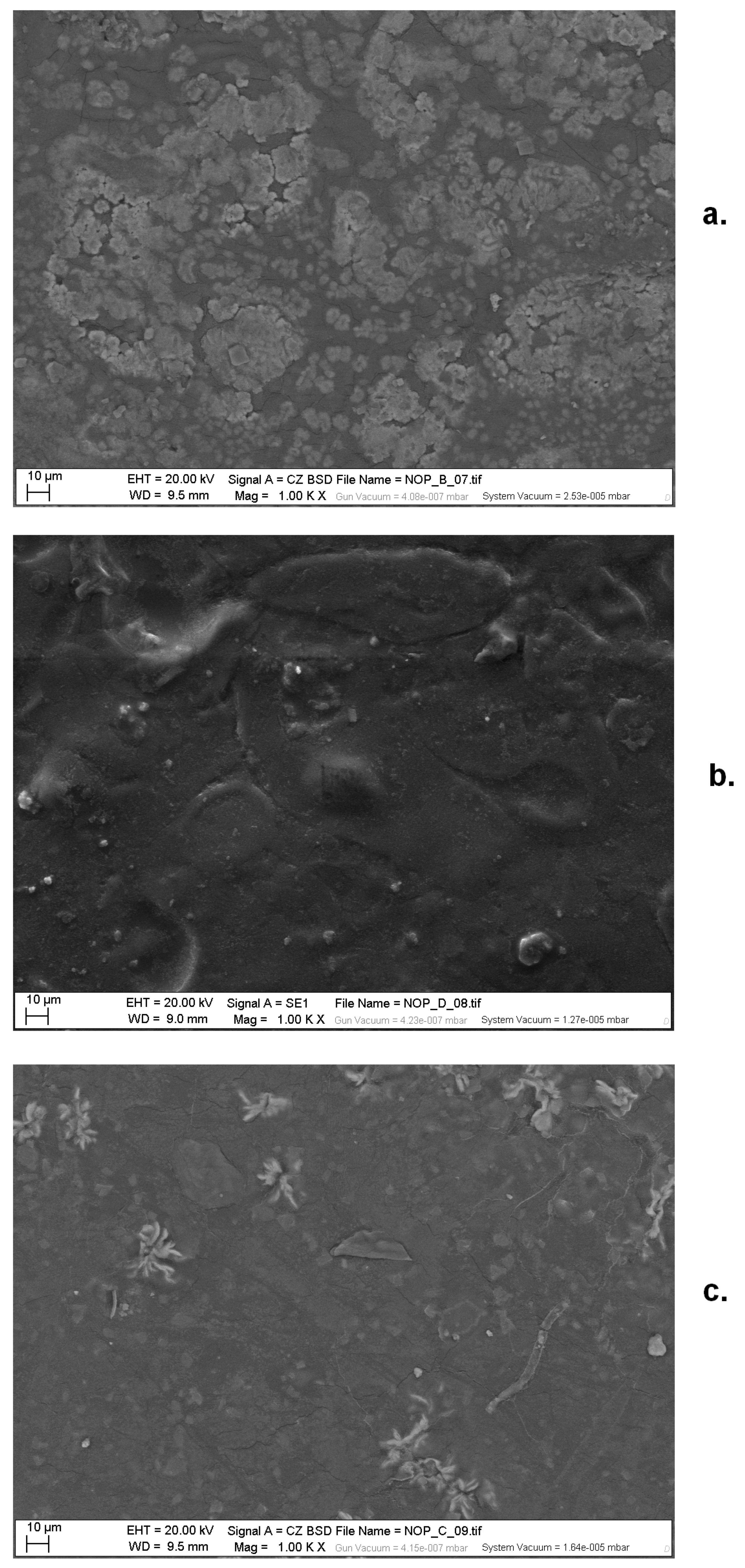
| Material | Thickness (mm) | Starch (%) | Glycerol (%) | Mucilage Filler (%) |
|---|---|---|---|---|
| TPS | 0.125 ± 0.015 | 71.5 | 28.5 | - |
| MA FILM | 0.150 ± 0.009 | 44.4 | 11.1 | 44.5 |
| ME FILM | 0.145 ± 0.01 | 45.6 | 11.4 | 43 |
| MPM FILM | 0.139 ± 0.008 | 43.3 | 10.8 | 45.9 |
| Material | Max. Stress (MPa) | Max. Strain (%) | Young’s Modulus (MPa) | Toughness (kNm2) |
|---|---|---|---|---|
| TPS | 3.75 ± 1.16 | 23.4 ± 8.3 | 240 | 440 ± 125 |
| MA | 1.45 ± 0.48 | 50.2 ± 7.8 | 6.5 | 365 ± 72 |
| ME | 0.68 ± 0.22 | 17 ± 3.5 | 29 | 143 ± 41 |
| MPM | 1.64 ± 0.36 | 53.7 ± 10.5 | 21 | 442 ± 130 |
| Material | Onset Temperature (°C) | Peak Temperature (°C) | Ending Temperature (°C) |
|---|---|---|---|
| TPS | 72 | 95 | 106 |
| MA | 84 | 93 | 97 |
| ME | 96 | 112 | 126 |
| MPM | 77 | 91 | 108 |
© 2020 by the authors. Licensee MDPI, Basel, Switzerland. This article is an open access article distributed under the terms and conditions of the Creative Commons Attribution (CC BY) license (http://creativecommons.org/licenses/by/4.0/).
Share and Cite
Scognamiglio, F.; Gattia, D.M.; Roselli, G.; Persia, F.; De Angelis, U.; Santulli, C. Thermoplastic Starch (TPS) Films Added with Mucilage from Opuntia Ficus Indica: Mechanical, Microstructural and Thermal Characterization. Materials 2020, 13, 1000. https://doi.org/10.3390/ma13041000
Scognamiglio F, Gattia DM, Roselli G, Persia F, De Angelis U, Santulli C. Thermoplastic Starch (TPS) Films Added with Mucilage from Opuntia Ficus Indica: Mechanical, Microstructural and Thermal Characterization. Materials. 2020; 13(4):1000. https://doi.org/10.3390/ma13041000
Chicago/Turabian StyleScognamiglio, Fabrizio, Daniele Mirabile Gattia, Graziella Roselli, Franca Persia, Ugo De Angelis, and Carlo Santulli. 2020. "Thermoplastic Starch (TPS) Films Added with Mucilage from Opuntia Ficus Indica: Mechanical, Microstructural and Thermal Characterization" Materials 13, no. 4: 1000. https://doi.org/10.3390/ma13041000
APA StyleScognamiglio, F., Gattia, D. M., Roselli, G., Persia, F., De Angelis, U., & Santulli, C. (2020). Thermoplastic Starch (TPS) Films Added with Mucilage from Opuntia Ficus Indica: Mechanical, Microstructural and Thermal Characterization. Materials, 13(4), 1000. https://doi.org/10.3390/ma13041000






